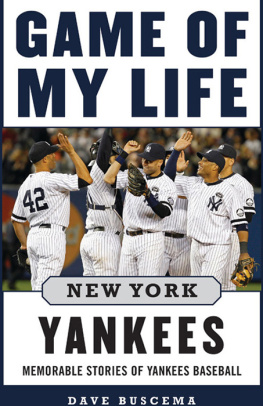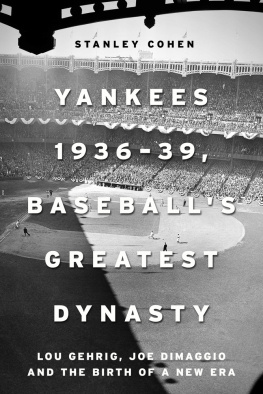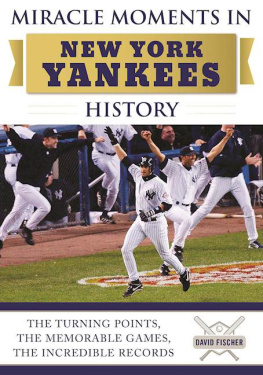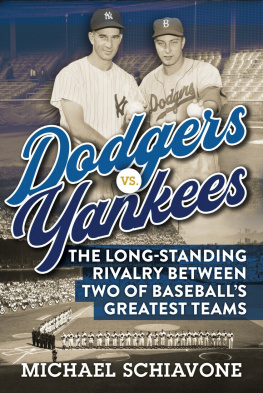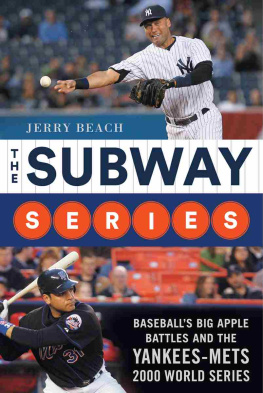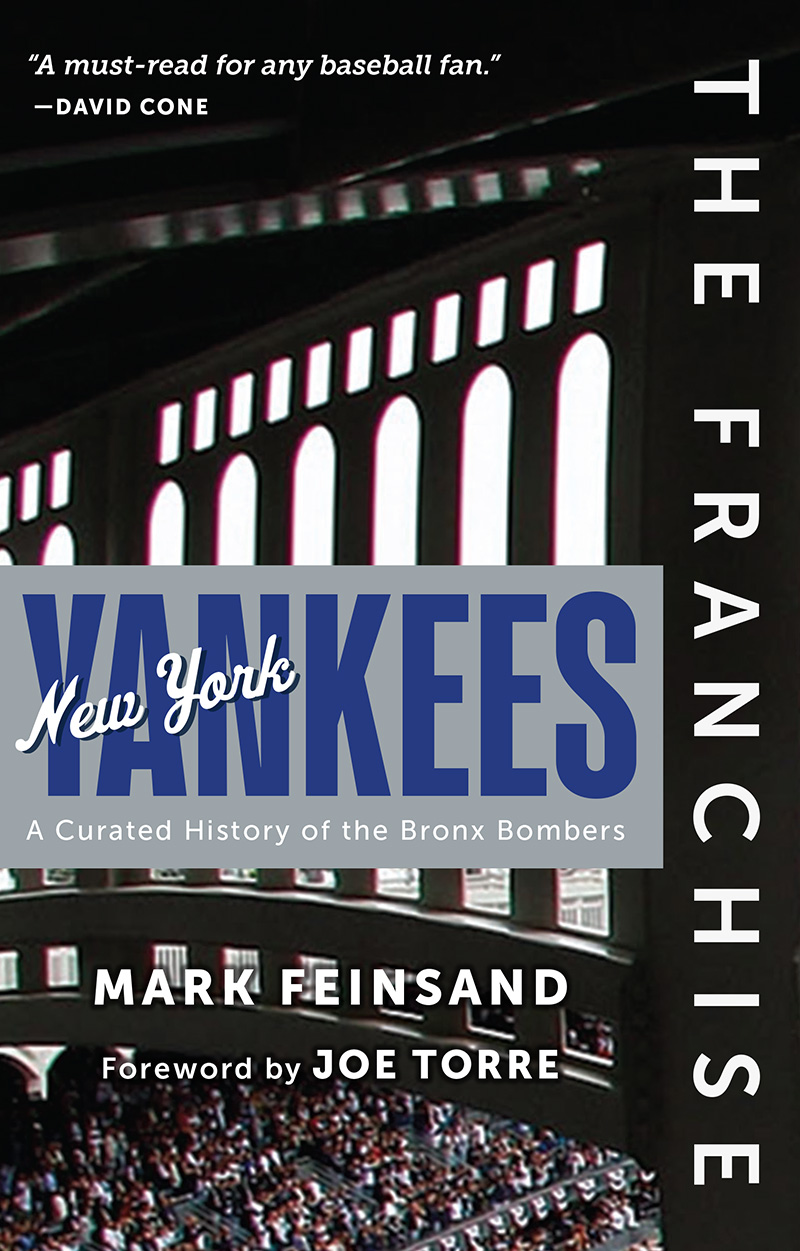
For Dena, Ryan, and Zack, the three most important people in my franchise.
In memory of George Gero, one of the biggest cheerleaders Ive ever had. Miss you and love you, Georgie.
Contents
Foreword by Joe Torre
When I was fired by the St. Louis Cardinals in June 1995, I figured my days as a big-league manager were behind me.
I had managed forand been fired byall three teams I played with during my career: the New York Mets, the Atlanta Braves, and St. Louis. My record was under .500, and although I knew I could succeed in that role if given the right opportunity, its rare for a manager to have a fourth chance. Its part of the game.
When that opportunity presented itself less than five months later, it was a no-brainer.
It was impossible to know at the time, but accepting the managerial job with the Yankees was the best decision I had made in my baseball career.
The publicity wasnt very favorable when George Steinbrenner hired me, which I understood. You cant have a record 100 games under .500 and expect people to be jumping up and down. But I was excited to find out if I could do it. New York didnt scare me and neither did George.
My brother Frank cautioned me, saying, Are you crazy? You know how many managers George has had? I told him I was going into this with my eyes wide open, but I just wanted to find out if I could do it. I was pretty confident in what I did, but it really didnt show in my win-loss record. I think I needed to find out for sure if what I was doing was basically traveling the right path.
What happened over the next 12 years was remarkable. We went to the postseason every year, winning six American League pennants and four World Series championships. I had the chance to manage some of the most talented players in the world, two of whomDerek Jeter and Mariano Riveranow have plaques in the Baseball Hall of Fame in Cooperstown. The fact that I have one in that hallowed hall is humbling for me, and I owe it all to my time with the Yankees.
I knew what I was getting into when I accepted the job and I never looked back once. Being a Yankee was always a proud thing for me. The last couple of years were difficult because I think that, probably on both sides, neither one of us knew how to say goodbye, but it was always exciting being with my hometown team and to have the success we did. It made New York a very small town for me, and it was great.
It was a magical run, no question.
Joe Torre
Part 1: The Architects
1. The Original Boss
If not for Jacob Ruppert, the New York Yankees would not be the New York Yankees.
The club had already changed its name from the Highlanders to the Yankees in 1913, two years before Ruppert and his partner, Tillinghast L. Huston, purchased the team.
But Ruppert, the son of a brewer who had already served as a United States congressman and been a colonel in the National Guard, was determined to make the Yankees more than second-class citizens in the New York baseball world.
The Yankees had been playing their games at the Polo Grounds, the home of the Giants, who at the time were the class of the National League. The Yankees were a perennial also-ran in the American League, posting losing records in each of the three years prior to Rupperts purchase.
For $450,000, we got an orphan ball club, Ruppert later said, as quoted in the New York Times . Without a home of its own, without players of outstanding ability, without prestige.
The Yankees finished no higher than fourth place during Rupperts first three years as owner, prompting him to make a change in the managers office. Bill Donovan was out and Miller Huggins was in, and while Huggins arrival certainly made an impact, it was Rupperts purchase of Babe Ruth from Boston Red Sox owner Harry Frazee for $100,000 prior to the 1920 season that turned things around for the franchise.
Ruppert also made another move that year that would help change the franchises fortunes, hiring Ed Barrow to become the teams primary executivewhat we now call a general managera position that did not exist within most baseball organizations at the time. Barrow, who had followed Ruth to New York, would help the Yankees purchase more players from the Red Sox in subsequent years, including Waite Hoyt and Carl Mays.
Back in the day, nobody gave owners credit for making ball clubs successful, baseball historian John Thorn told the New York Times in 2010. With the Yankees, Ed Barrow got the credit.
Ruth swatted 54 home runs in his first season with the Yankees, then hit 59 in 1921, leading the club to its first-ever World Series appearance. The Yankees lost to the Giants, but Ruths presence had given the club relevance, even as it continued to play its home games on the Giants turf.
The decision to purchase Ruth turned out to be a franchise-altering move for the Yankees, but there were critics who believed the Babe was little more than a sideshow. He was the strongman at the circus; the guy hanging around the golf range challenging people to see who could hit the longest drive.
There were still a lot of people who thought thats not how you play the game; they felt that baseball was meant to be played moving base by base, using hit-and-runs and sacrifices and all of that, said Marty Appel, author of Pinstripe Empire . They thought Babe was destroying a pure scientific game with his brute strength. Even in Boston, a lot of people were happy with the deal, because they felt, Good, we dont want his kind here. It obviously turned out that Ruth became the greatest drawing card of his time, but people werent universally in love with that acquisition.
Dissatisfied with his teams status as tenants at the Polo Grounds, Ruppert proposed a plan to Giants owner Horace Stoneham to jointly construct a new stadium, but Stoneham declined.
Ruppert and Huston closed their own deal in late 1921 for land in the Bronx, later breaking ground on construction for their own ballpark.
The Yankee Stadium is a mistake, Ruppert said, according to the New York Times . Not mine, but the Giants.
The relationship between Ruppert and Huston grew complicated that year, leading to Hustons sale of his share in the team to Ruppert, who became the clubs sole owner in May 1922.
Yankee Stadium opened in 1923.
[The Giants] didnt want to share the Polo Grounds with the Yankees anymore, which sort of forced Rupperts hand to find his own place and build his own stadium, Appel said. It was the first ballpark to legitimately be called a stadium when it opened in 1923. In Washington, they tried to call Griffith Park Griffith Stadium, but it was kind of a joke; it really didnt have that grandeur at all. John Brush with the Giants briefly tried to call the Polo Grounds Brush Stadium, but that didnt take. The magnificence of Yankee Stadium merited it being called a stadium and even that was precedent-setting.
The 1923 season not only saw the Yankees open their new home, but the club christened it with its first World Series championship, finally overcoming the Giants for the title.
It all came together in 1923, Appel said. It was the culmination of his work.
Rupperts fingerprints were all over the club, and not just from his decisions to hire Huggins and acquire Ruth. He paid attention to details that many of baseballs other owners did not, carrying through on his vow to make the Yankees a first-class operation in every possible sense.
He goes out and buys Babe Ruth and builds Yankee Stadium, and immediately it was the first-class operation in all of baseball, Appel said. Even little things were indicative of his determination that the Yankees be first class. He was the first owner to make sure that they had two sets of uniforms for every game, so that on doubleheaderswhich were frequentthey would always take the field in fresh uniforms for Game 2. As trite as that might sound, that was unheard of back then.


